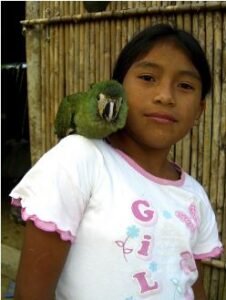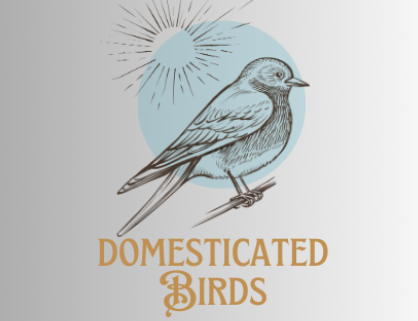Introduction:
We will explore traditional, modern, fascinating, and cost-effective methods to teach a parrot to talk following recent research. Teaching a parrot to talk is not only fascinating but also rewarding. Parrots are intelligent creatures capable of mimicking human speech with proper training. In this comprehensive guide, we’ll explore various methods, to help you effectively teach your parrot to talk.
How to Teach a parrot to talk?
Here we will discuss, some intriguing methods. to teach a parrot to talk efficiently.
Traditional Methods to teach a parrot to talk:
1. Repetition and Imitation:
– Why it Works: Parrots learn by mimicking sounds they hear frequently. By repeating words or phrases in a consistent tone, you can encourage your parrot to imitate them.
– How to Do it: Spend dedicated time each day repeating simple words or phrases in a calm and clear voice, ensuring your parrot has ample opportunity to listen and learn.

2. Positive Reinforcement:
– Why it Works: Parrots respond well to positive reinforcement. Rewarding your parrot with treats, praise, or toys when they mimic speech encourages them to continue.
– How to Do it: Whenever your parrot attempts to speak or successfully mimics a word, immediately praise them and offer a reward to reinforce the behavior.
Modern Methods:
3. Interactive Apps:
– Why it Works: With advancements in technology, there are now apps specifically designed to help teach parrots to talk. These apps provide interactive learning experiences for both you and your parrot.

– Recommended App: “Talking Pierre the Parrot” – This app utilizes voice recognition technology to provide feedback and track progress as your parrot learns to speak. It offers a variety of fun exercises and challenges to keep your parrot engaged.
4. Speech Training Games:
– Why it Works: Parrots are naturally curious and enjoy learning through play. Incorporating speech training games into their routine makes the learning process enjoyable and stimulating.
– Examples: “Word Association Game” – Associate simple words with actions or objects and encourage your parrot to mimic them during playtime. “Simon Says” – Teach your parrot to repeat phrases by turning it into a game of mimicry.
Feasible and Cost-Effective Methods:
5. Audio Recordings:
– Why it Works: Playing recorded human speech or audio tracks specifically designed for teaching parrots can help expose them to a variety of sounds and words.
– How to Do it: Play recordings of clear and distinct words or phrases several times a day, gradually increasing the complexity as your parrot progresses.
6. Social Interaction:
– Why it Works: Parrots are social creatures and often learn best through interaction with humans or other parrots.
– How to Do it: Encourage socialization by regularly engaging in conversation with your parrot. Additionally, exposing them to other talking parrots can provide valuable learning opportunities through observation and imitation.

Specific Strategies for Quaker Parrots:
7. Targeted Training Techniques:
– Why it Works:
Quaker parrots have unique vocal capabilities and preferences. Tailoring your training approach to suit their natural tendencies can yield better results.
– How to Do it: Focus on teaching quaker parrots shorter, clearer phrases and incorporate repetitive sounds or whistles, which align with their vocal repertoire.
Additional Tips:
– Patience is Key: Rome wasn’t built in a day, and neither is a talking parrot. Be patient and consistent in your training efforts. Teaching a parrot to talk takes time and consistency. Be patient and celebrate small victories along the way.
– Create a Stimulating Environment: Provide your parrot with plenty of toys, mental stimulation, and social interaction to encourage vocalization and learning.

Variety is Essential: Keep training sessions varied and engaging to prevent boredom and maintain your parrot’s interest. Incorporate games, toys, and different voices or accents to stimulate learning.
Bonding Through Communication: Training your parrot to talk isn’t just about teaching words; it’s also a bonding experience that strengthens the relationship between you and your feathered companion.
Conclusion:
In conclusion, to teach a parrot to talk requires a combination of patience, consistency, and the right training methods. By incorporating both traditional and modern approaches, tailored to your parrot’s personality and preferences, you can help unlock their potential for speech. Remember to make learning fun and rewarding for your feathered friend, and soon you’ll be enjoying conversations with your talkative companion.
FAQs:
- How can I teach my parrot to talk?
– To teach your parrot to talk, use repetition and positive reinforcement. Spend dedicated time each day repeating simple words or phrases in a calm and clear voice. Reward your parrot with treats or praise when they mimic speech.
- How to train a parrot to talk?
– Training your parrot to talk involves patience and consistency. Use repetition, positive reinforcement, and interactive methods such as playing speech training games or using apps designed for teaching parrots to talk.
- How to teach a parrot to talk in video?
– You can teach your parrot to talk in a video by recording yourself repeating words or phrases and playing the video for your parrot regularly. Ensure the video has clear audio and use positive reinforcement when your parrot mimics speech.
- How long does it take to teach a parrot to talk?
– The time it takes to teach a parrot to talk varies depending on factors such as species, age, and consistency of training. Some parrots may start mimicking speech within a few weeks, while others may take several months to show progress.
- How to teach parrot to come to you?
– To teach your parrot to come to you, use positive reinforcement and rewards. Call your parrot by name and offer a treat or praise when they come to you. Repeat this training consistently to reinforce the behavior.
- Why doesn’t my parrot talk?
– Some parrots may be shy or may not have been trained to talk properly. Ensure you are using positive reinforcement and spending enough time with your parrot to encourage vocalization. Additionally, certain parrot species may not have the ability to mimic human speech.
- Can all parrots be trained to talk?
– While most parrot species have the ability to mimic human speech to some extent, not all parrots may be inclined to talk. Species such as lovebirds and cockatiels are less likely to talk compared to African grey parrots or Amazon parrots.
- Can I teach funny things to my parrot?
– Yes, you can teach funny phrases or sounds to your parrot using the same training methods. Keep in mind that consistency and positive reinforcement are key. Choose phrases or sounds that are clear and easy for your parrot to mimic.
- Can all parrots learn to talk?
– While most parrot species have the ability to mimic human speech to some extent, individual aptitude varies. With proper training and patience, many parrots can learn to talk. Species such as lovebirds and cockatiels are less likely to talk compared to African grey parrots or Amazon parrots.
- How long does it take to teach a parrot to talk?
– The time it takes for a parrot to learn to talk varies depending on factors such as species, age, and consistency of training. Some parrots may start mimicking speech within a few weeks, while others may take several months to show progress.
- Are there any shortcuts to teaching a parrot to talk?
– While there are no guaranteed shortcuts, using effective training methods, maintaining consistency, and providing a stimulating environment can expedite the learning process for your parrot.


obor138
If you want to obtain a good deal from this
post then you have to apply these techniques to
your won web site.
вывод из запоя капельница ростов вывод из запоя капельница ростов .